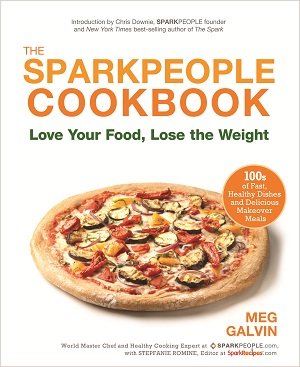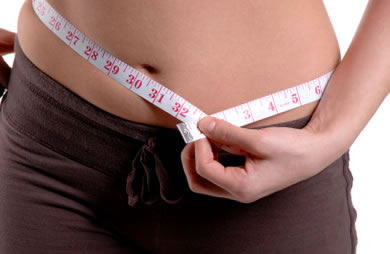|
As part of our research for "The SparkPeople Cookbook: Love Your Food, Lose the Weight," we conducted a "Ditch the Diet Taste Test." We asked successful SparkPeople members, yo-yo dieters and others to answer questions about weight loss, healthy eating, and dieting--and to pit Chef Meg's healthy, delicious recipes against traditional, bland "diet food." You can read all about the Taste Test in Chapter 2 of "The SparkPeople Cookbook," but this week we're sharing five of the diet myths we debunked as part of that project. Diet Myth #1: When you're watching your weight, you have to eat less. No way! We say NO growling bellies, NO deprivation, and NO puny portions. We fill up our plates with healthy food, so the eyes and the stomach are satisfied. When it comes to eating right, losing weight, and feeling satisfied after a meal, it comes down to one word: satiety. Satiety (suh-TIE-uh-tee) is that wonderfully pleasant feeling of fullness you get as you eat, when you’re no longer hungry but aren’t overly stuffed or uncomfortable. You are just satisfied beyond desire. The more satisfied you feel after a meal, the less you’ll eat later. So how do you increase satiety without eating more calories? Our No. 1 tip to stay fuller longer is to lean on low-density foods. Calorie density refers to the number of calories per gram of food. Foods that are high in calorie density contain a high number of calories per gram; foods that are low in calorie density contain a low number of calories per gram. Calorie density is the key to feel full without overeating. When you eat too many calorie-dense foods, you’ll end up consuming a lot of calories to fill your belly. If you focus on low calorie density foods, such as those used in our recipes, you can fill up on fewer calories because low-density foods contain a lot more water, which adds weight and volume to the food, but no calories. Just drinking a glass of water along with the meal does not provide the same degree of satiety. Research, including a year-long study at Penn State University, has shown that to reduce hunger and boost fullness, the water has to be in the food. Why? Because there are separate mechanisms in the brain to control hunger and thirst. If the food you eat contains the water, it will stay in the stomach longer while the food is being digested. Beyond that, there is also the psychological component of eating food versus drinking water. When you eat food, even water-rich food, you get more sensory stimulation because you have more food going through your mouth and you’re eating for a longer period of time, both of which help you feel more satisfied with your meal. When you read "The SparkPeople Cookbook: Love Your Food, Lose the Weight," you'll notice that we fill the plate but the recipes themselves are low in fat and calories. That's because we chose our ingredients carefully: plenty of fiber-rich fruits and vegetables, whole grains, and lean protein. You'll never feel deprived or leave the table hungry with these recipes! Though many "diets" force you to choose quality OR quality, SparkPeople doesn't. You can fill your plate--and eat every bite--while still losing or maintaining weight!  Learn more about this diet myth in "The SparkPeople Cookbook: Love Your Food, Lose the Weight." Click here to get five sneak peek recipes, too. Do you buy into this diet myth? Why or why not? Want more healthy recipes from Chef Meg, me and fellow SparkPeople members? Be sure to subscribe to SparkPeople's Recipe of the Day email. Click here to sign up! Did you know SparkRecipes is now on Facebook? Click here to "Like" us! |
Popular Entries |




















